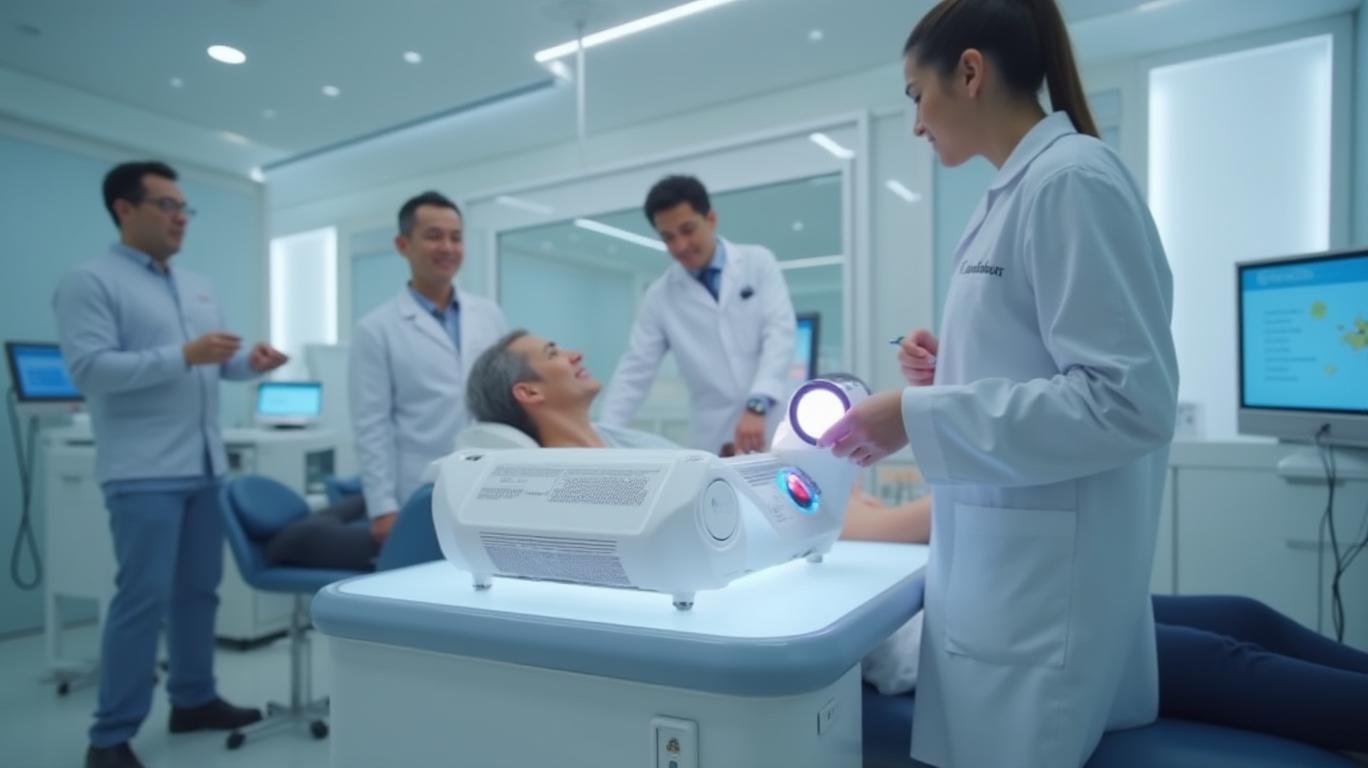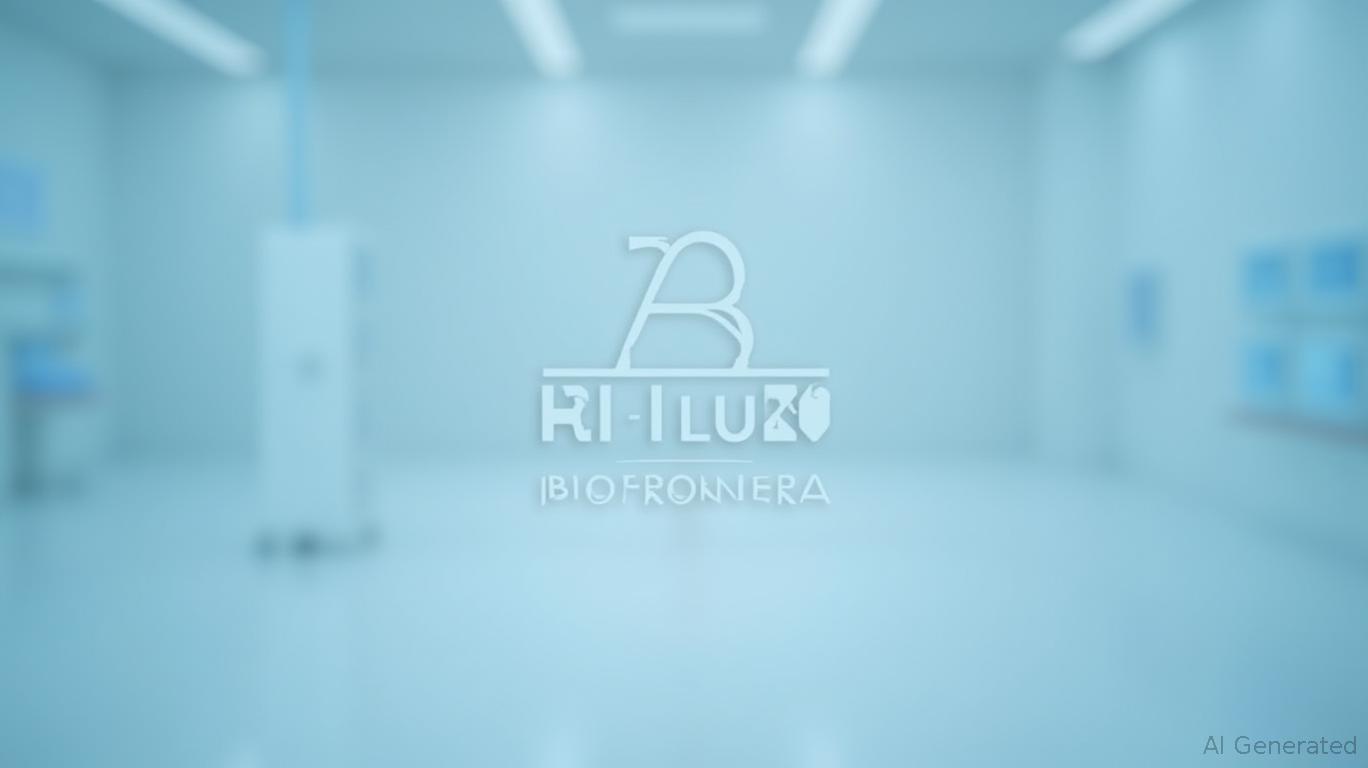Biofrontera Inc.: A Photodynamic Play Ahead of Q1 2025 Earnings
Biofrontera Inc. (NASDAQ: BFRI), a specialized biopharmaceutical company focused on dermatological treatments, is set to release its first-quarter fiscal year 2025 financial results on May 15, 2025, with a follow-up conference call on May 16. The report will offer critical insights into the company’s progress toward its 2025 goals, including positive EBITDA and expanded clinical milestones. As investors await these results, a deep dive into Biofrontera’s recent performance, strategic priorities, and risks is essential to gauge its potential.
Recent Financial Performance: Building Momentum
Biofrontera’s 2024 performance highlighted resilience despite headwinds. In Q4 2024, revenue rose 18.5% year-over-year to $12.6 million, driven by strong sales of its lead product Ameluz® (a photodynamic therapy, or PDT, treatment for actinic keratosis) and the successful launch of the BF-RhodoLED® XL lamp. Full-year revenue reached $37.3 million, a 9.5% increase over 2023, reflecting growing demand for its drug-device combination therapy.
While Q4 2024 ended with a net loss of $1.4 million, this was largely due to the absence of a $7.38 million legal settlement gain recorded in Q4 2023. Adjusted EBITDA improved to -$1.4 million from -$3.2 million in the prior-year period, signaling operational efficiency gains. Liquidity also strengthened, with cash reserves rising to $5.9 million by year-end—up from $1.3 million in 2023—thanks to financing activities.

2025 Outlook: Targeting Profitability and Clinical Breakthroughs
Biofrontera’s 2025 priorities revolve around three pillars: revenue growth, EBITDA profitability, and regulatory milestones.
- Revenue Growth:
- European Markets: Biofrontera AG (the parent company) aims for 10–12% revenue growth in Europe, leveraging Ameluz®’s 25.2% sales surge in Germany (its largest market).
US Sales: While US revenue is expected to remain flat due to a reduced transfer price (25% of net sales), the company plans to offset this with expanded European sales and new product placements.
EBITDA Target:
The company projects $0–$3 million in EBITDA for 2025, a stark turnaround from losses in prior years. This confidence stems from cost optimizations (e.g., G&A expenses fell 48% excluding legal costs in 2024) and the full recognition of legal provisions related to its ongoing litigation with SunPharma/DUSA.Clinical & Regulatory Progress:
- FDA Approvals: Ameluz®’s label extension for larger treatment areas (up to three tubes per session) is already approved, and Phase 3 trials for Superficial Basal Cell Carcinoma and actinic keratosis on the trunk/extremities are nearing completion.
- Product Expansion: The RhodoLED® XL lamp’s popularity (52 units sold in Q4 2024 alone) will drive recurring revenue through lamp placements and Ameluz® kit purchases.
Risks and Challenges: Navigating Uncertainty
Despite the optimism, Biofrontera faces significant hurdles:
- Legal Expenses: Though provisions for litigation with SunPharma/DUSA were booked in 2024, any unexpected costs could strain liquidity.
- US Market Dependence: Biofrontera Inc.’s US sales dropped 57.5% in 2024 due to reduced stockpiling and lower transfer pricing, leaving the company vulnerable to U.S.-specific market shifts.
- Regulatory Delays: Clinical trial outcomes and FDA approvals are critical to long-term growth. A setback in trials for non-melanoma skin cancers or acne could dampen investor sentiment.
Investment Considerations Ahead of Q1 2025 Results
Investors should focus on two key metrics in the upcoming report:
1. Q1 Revenue Growth: Will Ameluz® and RhodoLED® sales sustain momentum, especially in Europe?
2. EBITDA Progress: Did cost controls and operational efficiencies deliver a narrower loss or even breakeven EBITDA?
Additionally, management’s commentary on:
- Litigation updates (e.g., SunPharma/DUSA case status),
- Clinical trial timelines, and
- Strategic partnerships (e.g., the UK’s Galenica AB deal for Ovixan®)
will be critical to assess future growth potential.
Conclusion: A High-Reward, High-Risk Opportunity
Biofrontera’s Q1 2025 results will be a pivotal test of its ability to transition from a loss-making entity to a profitable, growth-oriented biotech. With a strong liquidity position ($5.9 million cash) and clinical pipelines advancing, the company is well-positioned to capitalize on the $1.2 billion global PDT market.
However, investors must weigh this potential against execution risks, including litigation outcomes and U.S. sales volatility. Should the Q1 report confirm progress toward positive EBITDA and regulatory approvals, Biofrontera could emerge as a compelling play in dermatology. Conversely, any missteps may pressure its stock, currently trading at $[X] (as of May 2025).
The earnings call on May 16 will provide clarity on whether Biofrontera’s strategy is paying off—or if it remains a high-risk, high-reward bet in a crowded dermatology space.










